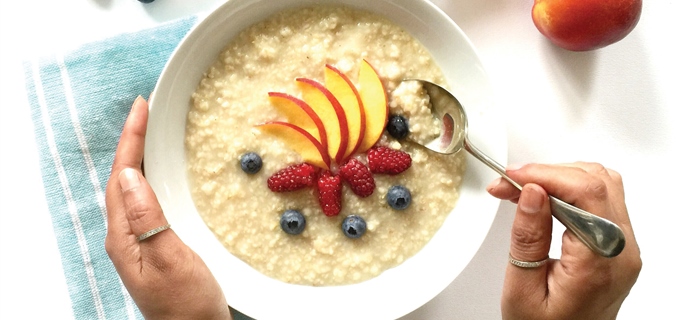Get News & Updates Directly To Your Inbox


Get News & Updates Directly To Your Inbox

Find A Doctor Or Hospital In Your Network.
Along with a variety of appetizing tastes, whole grains are a good source of fiber. Fiber can help reduce your risk for heart disease, lower your cholesterol, prevent cancer, and manage your weight to fend off diabetes.
Just make sure you’re eating whole grains, not refined grains.
Grains are made up of three edible parts: germ, bran and endosperm. A whole grain includes all three parts. Refined grains are processed to remove the healthy parts, the germ and bran. They may be lighter and fluffier, but they’re not healthier. Refined grains lack most of the nutrients and fiber offered by whole grains.
To make sure you're choosing whole grains:
Whole grains come in many varieties. Wheat, corn, rice, oats, barley, rye and popcorn are all whole grains. Quinoa (pronounced keen-wah) is also a whole grain. There are even "ancient" whole grains like farro (pronounced fair-o). The refined version of farro is called pearled.
Want to add a powerful dose of disease-fighting nutrients to your diet? Chock full of antioxidant B vitamins and E vitamins, magnesium and iron, whole grains fit the bill. People who eat three daily servings of whole grains can cut some health risks, including:
You can't necessarily judge a product by its coloring to know if it's whole wheat. Brown coloring doesn't mean a food is made from whole grain. It might be brown from molasses.
And don't be fooled by products that say they are multi-grain, stone-ground, seven-grain or made with cracked wheat, bran, or "100 percent” wheat. They may or may not be whole grain. The only way to know for sure is to look for the word "whole." Choose products that list whole grain as the first ingredient on the package.
It's easy to add whole grains to your diet. Get inspiration with the free, tasty recipes served up by the Whole Grains Council. ![]()
Originally published 7/15/2019; Revised 2021,2023
Blue Cross and Blue Shield of Illinois, a Division of Health Care Service Corporation,
a Mutual Legal Reserve Company, an Independent Licensee of the Blue Cross and Blue Shield Association
© Copyright 2025 Health Care Service Corporation. All Rights Reserved.
Verint is an operating division of Verint Americas, Inc., an independent company that provides and hosts an online community platform for blogging and access to social media for Blue Cross and Blue Shield of Illinois.
![]() File is in portable document format (PDF). To view this file, you may need to install a PDF reader program. Most PDF readers are a free download. One option is Adobe® Reader® which has a built-in screen reader. Other Adobe accessibility tools and information can be downloaded at https://www.adobe.com/trust/accessibility.html.
File is in portable document format (PDF). To view this file, you may need to install a PDF reader program. Most PDF readers are a free download. One option is Adobe® Reader® which has a built-in screen reader. Other Adobe accessibility tools and information can be downloaded at https://www.adobe.com/trust/accessibility.html. ![]()
![]() You are leaving this website/app ("site"). This new site may be offered by a vendor or an independent third party. The site may also contain non-Medicare related information. Some sites may require you to agree to their terms of use and privacy policy.
You are leaving this website/app ("site"). This new site may be offered by a vendor or an independent third party. The site may also contain non-Medicare related information. Some sites may require you to agree to their terms of use and privacy policy.
Powered by Verint
Last Updated 10012018
Y0096_WEB_IL_CONNECT19_C